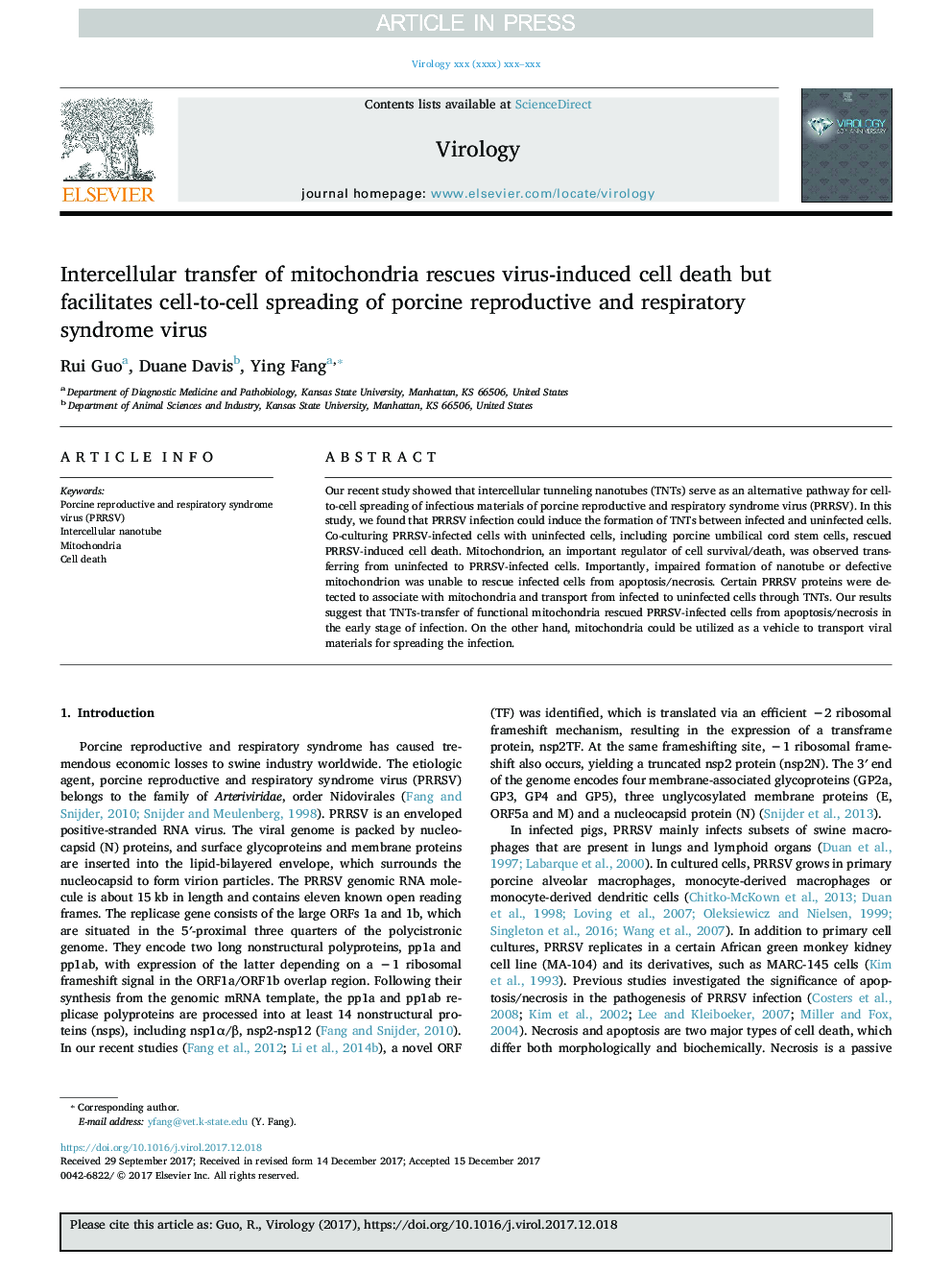| Article ID | Journal | Published Year | Pages | File Type |
|---|---|---|---|---|
| 8751504 | Virology | 2018 | 13 Pages |
Abstract
Our recent study showed that intercellular tunneling nanotubes (TNTs) serve as an alternative pathway for cell-to-cell spreading of infectious materials of porcine reproductive and respiratory syndrome virus (PRRSV). In this study, we found that PRRSV infection could induce the formation of TNTs between infected and uninfected cells. Co-culturing PRRSV-infected cells with uninfected cells, including porcine umbilical cord stem cells, rescued PRRSV-induced cell death. Mitochondrion, an important regulator of cell survival/death, was observed transferring from uninfected to PRRSV-infected cells. Importantly, impaired formation of nanotube or defective mitochondrion was unable to rescue infected cells from apoptosis/necrosis. Certain PRRSV proteins were detected to associate with mitochondria and transport from infected to uninfected cells through TNTs. Our results suggest that TNTs-transfer of functional mitochondria rescued PRRSV-infected cells from apoptosis/necrosis in the early stage of infection. On the other hand, mitochondria could be utilized as a vehicle to transport viral materials for spreading the infection.
Related Topics
Life Sciences
Immunology and Microbiology
Virology
Authors
Rui Guo, Duane Davis, Ying Fang,
